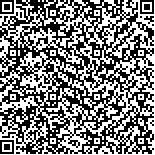| Quote
: |
朱恒杰,曾允富,程少文,郑林洋.积雪草苷通过Nrf2/HO-1信号通路对创伤脓毒血症大鼠肾损伤的保护作用研究[J].湖南中医药大学学报英文版,2023,43(1):14-20.[Click to copy
] |
|
| |
|
|
| This paper
:Browser 1514times Download 605times |
| 积雪草苷通过Nrf2/HO-1信号通路对创伤脓毒血症大鼠肾损伤的保护作用研究 |
| 朱恒杰,曾允富,程少文,郑林洋 |
| (海南医学院第一附属医院急诊和创伤外科, 海南 海口 400000) |
| 摘要: |
| 目的 探究积雪草苷通过核因子E2相关因子2(nuclear factor-erythroid 2-related factor 2,Nrf2)/血红素加氧酶1(hemeoxygenase-1,HO-1)信号通路对创伤引起的脓毒血症大鼠肾损伤的影响以及对氧化应激的调控作用。方法 将60只SD雄性大鼠随机分为对照组(n=10)和脓毒血症组(n=50)。脓毒血症组通过盲肠结扎建立动物模型,造模成功后随机均分为模型组、低剂量组、中剂量组、高剂量组和阳性组。低剂量组、中剂量组、高剂量组灌胃积雪草苷(1.0、2.5、5.0mg/mL);阳性组注射氨苄西林钠(200mg/kg);模型组与对照组灌胃生理盐水。记录大鼠的生存时间;取样观察肾组织病理形态;检测血清中血肌酐(serum creatinine,Scr)、尿素氮(blood urea nitrogen,BUN)、丙二醛(malonic dialdehyde,MDA)、超氧化物歧化酶(superoxide dismutase,SOD)水平以及肾组织中Nrf2和HO-1蛋白含量。结果 与对照组比较,模型组生存时间更短(P<0.05),肾组织炎症反应明显,Scr、BUN、MDA水平升高(P<0.05),SOD水平降低(P<0.05),Nrf2、HO-1蛋白表达水平降低(P<0.05);与模型组相比,积雪草苷治疗各组及阳性组生存时间延长(P<0.05),肾组织炎症减轻,Scr、BUN、MDA水平降低(P<0.05),SOD水平升高(P<0.05),Nrf2、HO-1蛋白表达水平升高(P<0.05);积雪草苷治疗组上述指标呈现剂量依赖性,其中高剂量组与模型组对比最为明显(P<0.05);高剂量组BUN和MDA水平较阳性组更低(P<0.05),HO-1蛋白表达水平较阳性组更高(P<0.05)。结论 积雪草苷可能通过Nrf2/HO-1通路,抑制氧化应激反应,改善脓毒血症大鼠的肾损伤状况,其作用呈现剂量依赖性,且较抗生素治疗有一定的优势。 |
| 关键词: 积雪草苷 脓毒血症 氧化应激 Nrf2/HO-1 肾损伤 大鼠 |
| DOI:10.3969/j.issn.1674-070X.2023.01.003 |
| Received:June 02, 2022 |
| 基金项目:国家自然科学基金资助项目地区科学基金项目(81860347)。 |
|
| Protective effects of asiaticoside on renal injury in rats with traumatic pyemia through Nrf2/HO-1 signaling pathway |
| ZHU Hengjie,ZENG Yunfu,CHENG Shaowen,ZHENG Linyang |
| (Department of Emergency and Traumatology, The First Hospital of Hainan Medical College, Haikou, Hainan 400000, China) |
| Abstract: |
| Objective To explore the effects of asiaticoside on renal injury and the regulation of oxidative stress in rats with trauma-induced pyemia through the nuclear factor-erythroid 2-related factor 2 (Nrf2)/ hemeoxygenase-1 (HO-1) signaling pathway. Methods A total of 60 male SD rats were randomly divided into control group (n=10) and pyemia group (n=50). Animal models of pyemia group were established by cecal ligation. After successful modeling, rats were randomly divided into model group, low-dose group, medium-dose group, high-dose group and positive group. Groups of low-, medium-and high-doses were administered asiaticoside by intragastric gavage (1.0, 2.5, 5.0 mg/mL) respectively. The positive group was injected with ampicillin sodium (200 mg/kg), and the model group and control group were administered physiological saline by intragastric gavage. The survival time of groups was recorded. In addition, samples were taken to observe the pathological morphology of renal tissue, and the levels of blood serum creatinine (SCR), blood urea nitrogen (BUN), malonic dialdehyde (MDA), superoxide dismutase (SOD), and Nrf2 and HO-1 protein content in renal tissue were tested. Results Compared with control group, the survival time of the model group was shorter (P<0.05) with the apparent inflammatory reaction of renal tissue, and the levels of SCR, BUN and MDA were significantly higher (P<0.05). SOD level decreased (P<0.05), and the levels of Nrf2 and HO-1 protein expression significantly decreased (P<0.05); compared with model group, the survival time of asiaticoside treatment group was prolonged (P<0.05) with the alleviated renal tissue inflammation, the levels of SCR, BUN and MDA decreased (P<0.05), the SOD level increased (P<0.05), and the expression levels of Nrf2 and HO-1 protein significantly increased (P<0.05); the above indexes of asiaticoside treatment group showed dose-dependence, with the most significant comparison between the high-dose group and the model group (P<0.05). The BUN and MDA levels of rats in the high-dose group were lower than those in positive group, and the expression of HO-1 was higher than that in positive group. Conclusion Asiaticoside may inhibit oxidative stress response and improve renal injury in rats with pyemia through Nrf2/HO-1 pathway. It shows dose-dependence and has certain advantages on antibiotic treatment. |
| Key words: asiaticoside pyemia oxidative stress Nrf2/HO-1 renal injury rat |
|

二维码(扫一下试试看!) |
|
|
|
|


